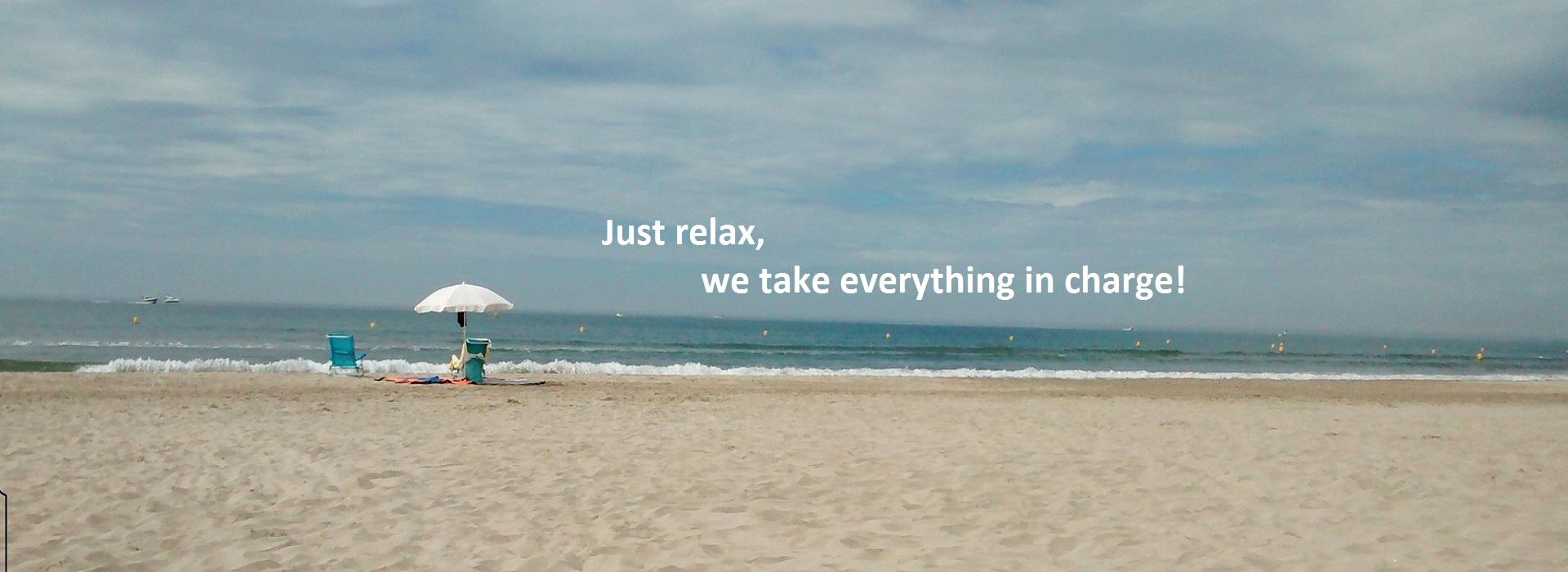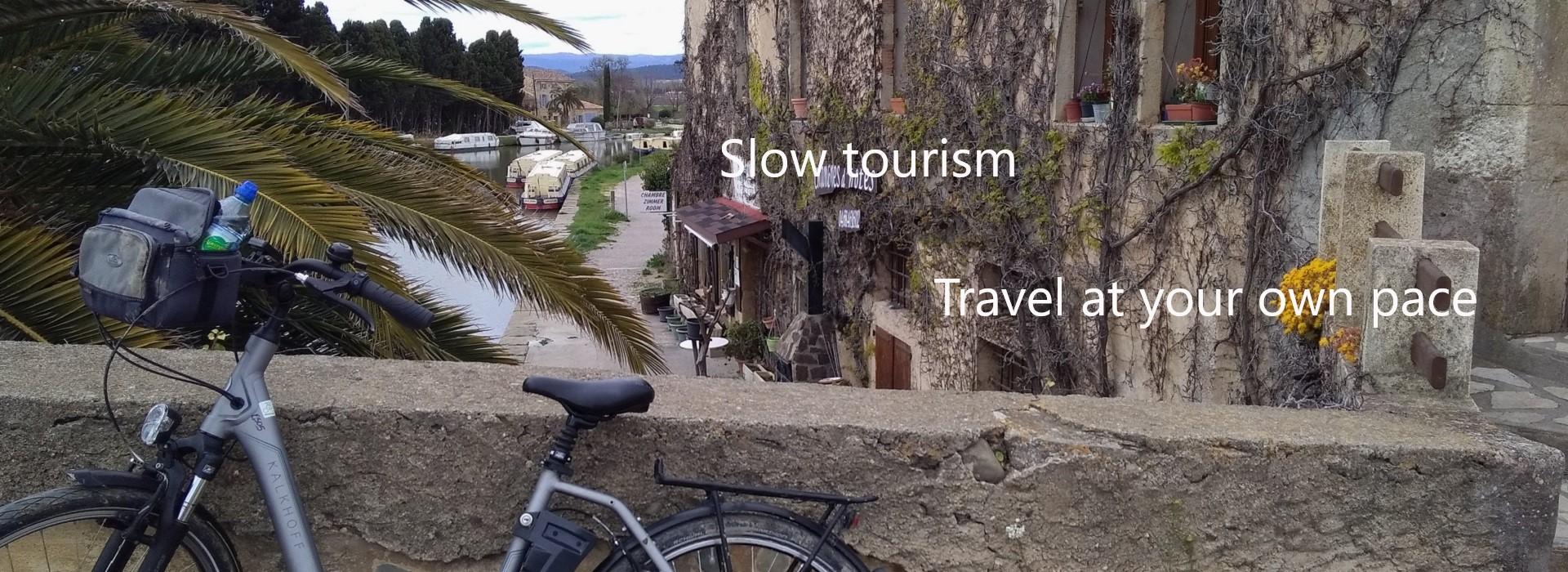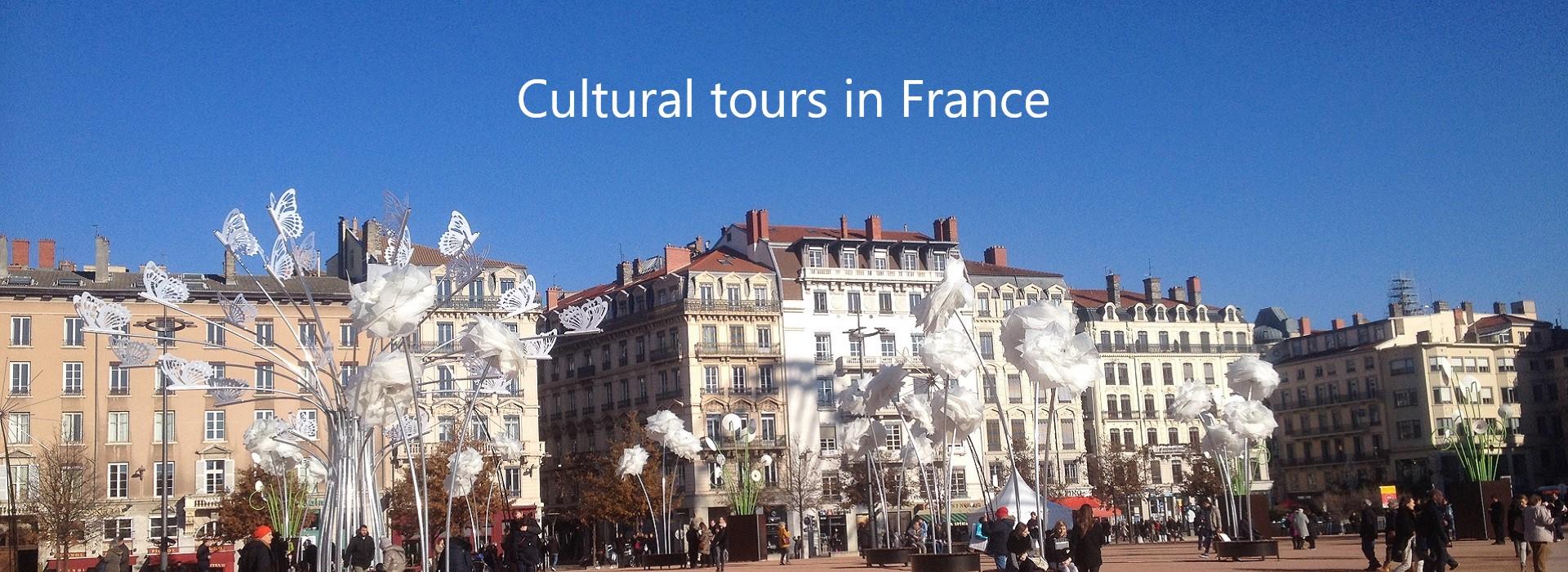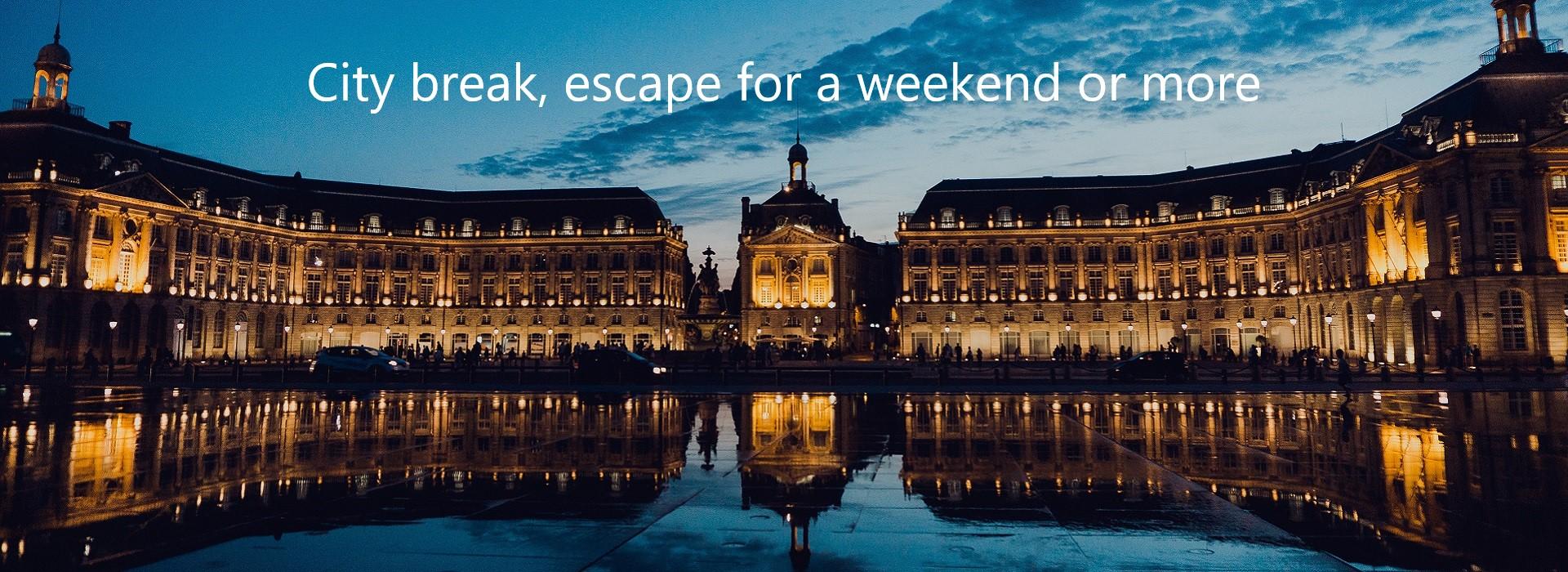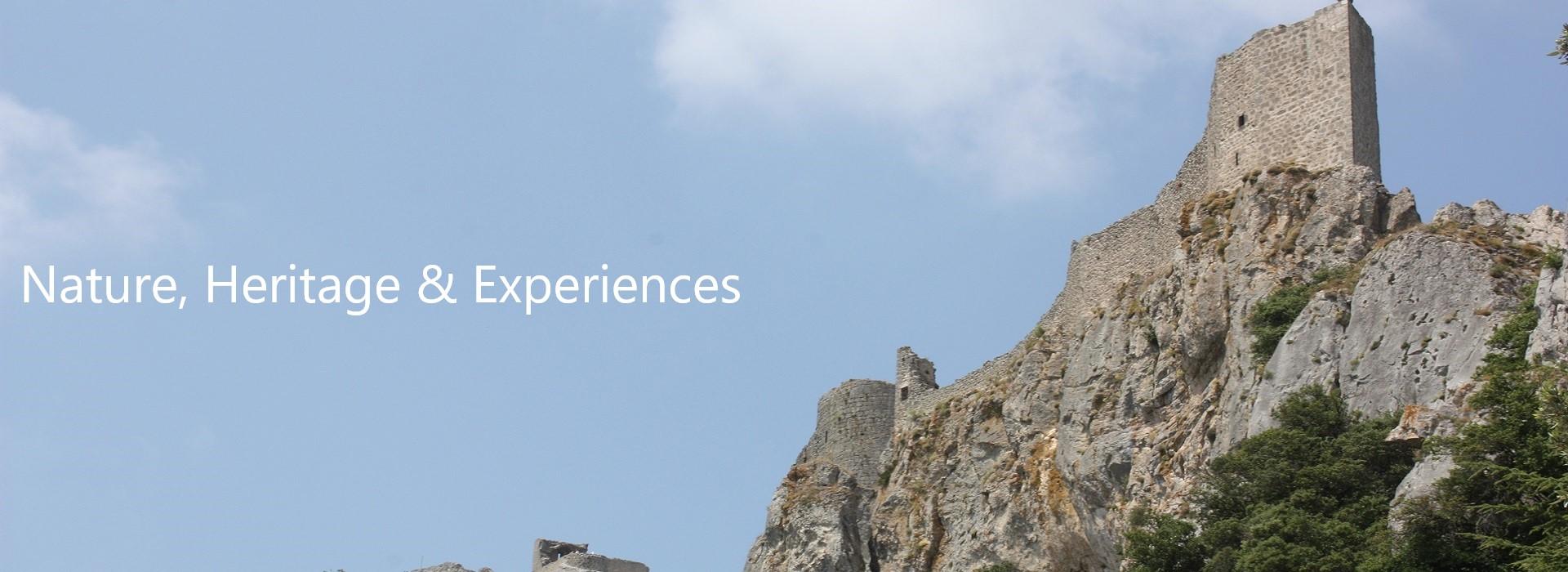Perpignan The Catalan One
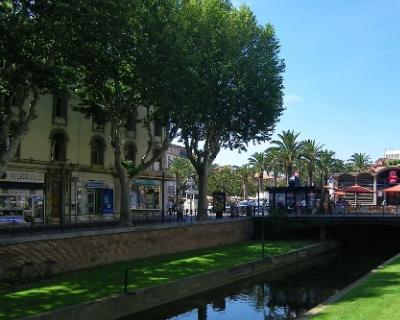
What to do in Perpignan, The Catalan One !
Called the Catalan One, Perpignan city still preserves its traditions, a traditional language and a particular and delicious gastronomy ! As a particular jewel in southern France, if you plan to travel i n French Catalonia, you must stop in there and discover its treasures and wonders, its rugby teams and enjoy its sun and quiet life. Just located in between the Mediterranean sea ( ~7 miles) and the Pyrenees mountains, Perpignan is famous for being one of the most sunny cities of France and is just at 2 steps from the Vermillion Coast and all the beautiful resorts and naturally, not so far from many historical and natural sites and monuments.
The perfect site for the lovers of History, nature lovers, and people who want to discover the Pyrenees on hiking. This charming destination is perfect for people who want to discover new places on a holidays week or weekend !
Come to stroll and get lost in the narrow streets of the old city centre and enjoy the charming walks along the river crossing through the city! Are you ready to follow us and discover the treasures of the city? Sure, I bet you are !
The Castillet :
Here is perhaps the most emblematic monument of the city, today it is the one you may admire on the town hall logotype. It’s name is coming from Catalan language and means small castle/fortress. Built during the 14th century, this building used to be the main gate to enter the city. For a long time it was the best way to protect the city that was once the capital of Majorca Kingdom. Even when Perpignan definitely became a French city during the 17th century, it was still protected by this massive gate. A change happened through the 19th century, it was a jail. Nowadays everything is different, the monument is a museum dedicated to local culture and history : Casa Pairal.


St John the Baptist Cathedral :
Maybe one of the most unexpected and particular buildings of the city : St John the Baptist Cathedral. This beautiful church is actually the very characteristic of the Catalan Architecture : a mix of pebbles and bricks. Even if the edification started under the reign of Sancho the 1st of Majorca, it only was finished in the 17th century because of many political troubles and lacks of money. Inside the Cathedral treasures like the tomb of the King are still here, but maybe the true jewel of this place are the sumptuous Catalan baroque altarpieces. Made of wood and representing many saints and characters from the Bible, all those precious sculptures are covered in gold leaves and colourful and shinny paintings.
The Campo Santo :
The Campo Santo used to be St John’s cloister and graveyard. Nowadays it is the best preserved funerary cloister of Europe. Created the same time St John Cathedral was built. On 3 of the cloister’s sides there was tombstones for the nobles and wealthy families of the city. The poor ones were buried underground the centre of the cloister.
After French Revolution, the army used it as a stable and a weapons and gun powder warehouse. Once central police centre, restauration work started in the 1990’s. Nowadays, a second life was brought to the Campo Santo. It’s possible to visit it and this place hosts music Concert. Around 2010, French musician and singer Cali did record the videoclip of I his song “1000 coeurs debout” (1000 hearts standing up) within.
After French Revolution, the army used it as a stable and a weapons and gun powder warehouse. Once central police centre, restauration work started in the 1990’s. Nowadays, a second life was brought to the Campo Santo. It’s possible to visit it and this place hosts music Concert. Around 2010, French musician and singer Cali did record the videoclip of I his song “1000 coeurs debout” (1000 hearts standing up) within.
The Town Hall :
Perpignan Town Hall was the Medieval merchants and traders Council Lodge. From this time, the building still preserves a beautiful courtyard surrounded by beautify arched galleries and sculptures of fantastic animals. In the middle of the yard, there is a beautiful statue by famous artist Aristide Maillol : The Mediterranean sea represented by a beautiful girl.
The actual Wedding House was formerly the room were merchants and consuls used to meet. As a witness of how luxurious was the room by the past, there is still a beautiful coffered ceiling. Like many Catalan monuments, the town hall’s façade is decorated by pebbles and an 18th wrought iron gate. Also, three bronze hands sculpted on the façade represent the three orders from the past : Nobility and bourgeoisie, merchants and traders and doctors, the last one, the craftsmen.
The actual Wedding House was formerly the room were merchants and consuls used to meet. As a witness of how luxurious was the room by the past, there is still a beautiful coffered ceiling. Like many Catalan monuments, the town hall’s façade is decorated by pebbles and an 18th wrought iron gate. Also, three bronze hands sculpted on the façade represent the three orders from the past : Nobility and bourgeoisie, merchants and traders and doctors, the last one, the craftsmen.
The Sea Consul’s Lodge :
Built on the pella, skins, cloth and second hand clothes market, from 1397, the sea consul's lodge sheltered the maritime courts created in 1388. Built from the model of the lodges of the Catalan- kingdom, it is a sumptuous flamboyant Gothic Style. In the middle of the 18th century this monument was changed into a theatre later, it became a post house for the stagecoach, then later the Café de France. The caravel and the bas relief on the frontage Merchants street side, showing St John-the-Baptist standing on waters, also evoke the consulate of the sea.
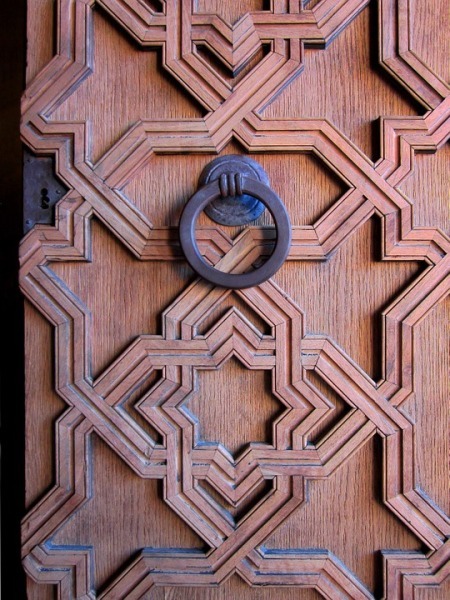
The Xanxo Mansion :
This splendid private mansion from the early 16th is one of the jewels of Catalan Architecture, hidden in the city centre. Built for the family of a famous draper merchant, Bernat Xanxo, this mansion preserve some beautiful decorations such as a sculpted garland that’s an evocation of the 7 Deadly Sins. Even if until there was few changes on the façade, a part of the sculpted garland was “sacrificed” to open classical windows. It is today one of the most interesting and charming buildings of Perpignan.
The Pams Mansion :
Famous artist Alfons Mucha did beautiful and voluptuous advertising posters for a brand of cigarette paper : J.O.B.
Pierre Bardou, the owner of the brand and factories was the one who bought the mansion, but it was Jules Pams his son-in-law who took in charge all the work to give the house its modern aspect. The main factory of this great family was situated just right back the house. Sold to the city, the mansion is the city’s property since 1946. The garden, courtyards and decorated fountains are the same than when the family was living there. Today the Pams mansion is the head office of the city cultural centre administration and the main organisation office of the pictures festival :
Visa pour l’Image.
Pierre Bardou, the owner of the brand and factories was the one who bought the mansion, but it was Jules Pams his son-in-law who took in charge all the work to give the house its modern aspect. The main factory of this great family was situated just right back the house. Sold to the city, the mansion is the city’s property since 1946. The garden, courtyards and decorated fountains are the same than when the family was living there. Today the Pams mansion is the head office of the city cultural centre administration and the main organisation office of the pictures festival :
Visa pour l’Image.
Walks and strolls in the city :
The best way to discover Perpignan is to make a stroll in the centre and enjoy the old houses, the charming colours of the façades and their typical bricks, pebbles or wrought iron gates. It is also the best occasion to discover the local shops and the craftsmen workshops.
If you are looking for a good spot to have a refreshment or a drink, The Republic square is one of the main city centre places and also known for all its coffeehouses and the classical Theatre. A weekly market just in front of the Theatre is known for its local and often organic products.
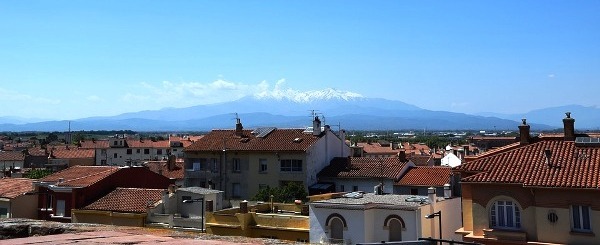
While sauntering along the old streets of the centre, people discover the typical bricks and stone façades, the little shops, but not only. As a remind of the past, some narrow passages around the Theatre square knew how to keep the things very local. For example, in René Palatilla Street it is always a pleasure to (re)discover a stall covered in very local fresh fruits and vegetables or salted cod, like in the markets from the “good old days”. For whom likes to take pictures with shimmering colours, this is the perfect spot. All the good flavours and colours concentrated in one spot !
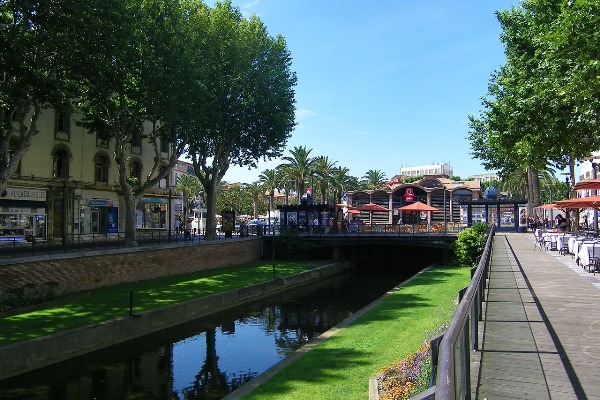
To get out of the centre and discover other places, the best is to reach Arago square, also famous for being a quiet place to have a cup of tea or coffee and maybe because from here you can walk toward Vauban docks. Today, shops, an independents and arts movie theatre and tea rooms give a perfect touch for whom is looking for a nice stroll or just a cooler place to refresh from the warming sun. If you keep on walking, the you would reach the Maillol path walk and the shade it offers thanks to all the plane trees. This is perhaps the best way to admire the Art Deco façades of the apartments and houses built along the boulevards. A funny detail : in summer, you may enjoy the presence of a fountain making light and sounds like in Barcelona.
If you are looking for a good spot to have a refreshment or a drink, The Republic square is one of the main city centre places and also known for all its coffeehouses and the classical Theatre. A weekly market just in front of the Theatre is known for its local and often organic products.

While sauntering along the old streets of the centre, people discover the typical bricks and stone façades, the little shops, but not only. As a remind of the past, some narrow passages around the Theatre square knew how to keep the things very local. For example, in René Palatilla Street it is always a pleasure to (re)discover a stall covered in very local fresh fruits and vegetables or salted cod, like in the markets from the “good old days”. For whom likes to take pictures with shimmering colours, this is the perfect spot. All the good flavours and colours concentrated in one spot !

To get out of the centre and discover other places, the best is to reach Arago square, also famous for being a quiet place to have a cup of tea or coffee and maybe because from here you can walk toward Vauban docks. Today, shops, an independents and arts movie theatre and tea rooms give a perfect touch for whom is looking for a nice stroll or just a cooler place to refresh from the warming sun. If you keep on walking, the you would reach the Maillol path walk and the shade it offers thanks to all the plane trees. This is perhaps the best way to admire the Art Deco façades of the apartments and houses built along the boulevards. A funny detail : in summer, you may enjoy the presence of a fountain making light and sounds like in Barcelona.
The Majorca King Palace :
The majestic palace is right in the top and centre of the city. The Majorca Kingdom Palace is the incarnation of power and strength of royalty between the 13th and 14th century. When king James the 1st of Aragon abdicated in favour of is two sons, he divided is kingdom in two parts. Is second son, James the 2nd, inherited of the actual French Catalonia, Montpellier city and its lands and Balearic Islands. Perpignan was in this glorious time the capital of such an important Kingdom and the palace was the incarnation of this royal authority.
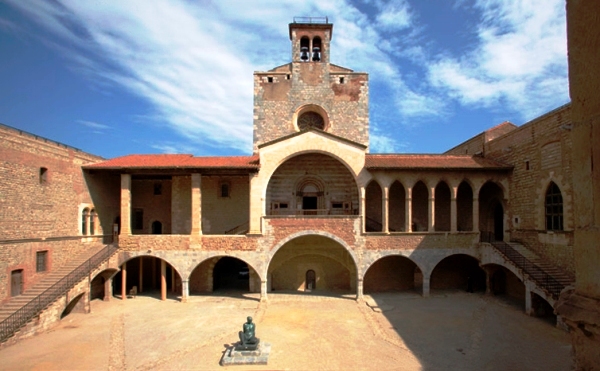
Nowadays, the palace is still up and located right on the top of the city. This situation was a perfect point, it was not only made to watch the wall city, it also was a good point to be turned towards the Pyrenees and protect this entrance to the Kingdom. When Perpignan and all Northern Catalonia definitely became a French city, the palace was transformed to become a fortress from which one Vauban did the plans in his characteristic defensive star. Opened to the visit, this magnificent place is to discover and make reminds the glorious time Perpignan was Majorca Kingdom main city.

Nowadays, the palace is still up and located right on the top of the city. This situation was a perfect point, it was not only made to watch the wall city, it also was a good point to be turned towards the Pyrenees and protect this entrance to the Kingdom. When Perpignan and all Northern Catalonia definitely became a French city, the palace was transformed to become a fortress from which one Vauban did the plans in his characteristic defensive star. Opened to the visit, this magnificent place is to discover and make reminds the glorious time Perpignan was Majorca Kingdom main city.
A Festival and Rugby city :
Perpignan is not only a touristic point for the charm of its streets and buildings, it is also a place known for its festival and culture.
One of the most famous international festival is Visa pour l’Image. Created in 1989, this important exhibition of photojournalism happens every year in between the end of August and the middle of September. The idea is to create a cultural event out of the main touristic pathes the city offers. This international happening is also the occasion to gather many professional of journalism, discover new talents and give awards to the most inspired photographers or the one who covered tragic and important events . Several points opened in the city let a chance to the public to discover the work of the one who received an award.

If you come to visit Perpignan in summer, from the second Thursday of July until last one of August month, it is the perfect time to discover the Jeudi de Perpignan (The Perpignan’s Thursdays). Weekly during the summer season, citizens and tourists gather all over the city at the evening and during the night. This time, people enjoy local music group concerts on stages, street theatre and dancing and acrobatic shows. The best part are maybe the marches in which one actors and acrobats in disguises walk through the city and create light games and sing.
How could we talk of Perpignan without talking of its two rugby teams. Actually more than a fair game, rugby is a kind of institution in the city and part of the local life.
The two clubs do play differently. The first club : USAP is a 15 players team, and is supposed to offer a “fair” game. In the beginning, teams of 15 players were reserved for the boys and men from the wealthy families. The second team is a 13 players one : Les Dragons Catalans (The Catalan Dragons). Formerly, the game was different and more “violent”. Originally, it was reserved to the sons and men from the working and craftsmen class. Nowadays, the social scales in between the players of the two team are over, the difference is only in the way they do play and the rules that must be followed.

One of the most famous international festival is Visa pour l’Image. Created in 1989, this important exhibition of photojournalism happens every year in between the end of August and the middle of September. The idea is to create a cultural event out of the main touristic pathes the city offers. This international happening is also the occasion to gather many professional of journalism, discover new talents and give awards to the most inspired photographers or the one who covered tragic and important events . Several points opened in the city let a chance to the public to discover the work of the one who received an award.

If you come to visit Perpignan in summer, from the second Thursday of July until last one of August month, it is the perfect time to discover the Jeudi de Perpignan (The Perpignan’s Thursdays). Weekly during the summer season, citizens and tourists gather all over the city at the evening and during the night. This time, people enjoy local music group concerts on stages, street theatre and dancing and acrobatic shows. The best part are maybe the marches in which one actors and acrobats in disguises walk through the city and create light games and sing.
How could we talk of Perpignan without talking of its two rugby teams. Actually more than a fair game, rugby is a kind of institution in the city and part of the local life.
The two clubs do play differently. The first club : USAP is a 15 players team, and is supposed to offer a “fair” game. In the beginning, teams of 15 players were reserved for the boys and men from the wealthy families. The second team is a 13 players one : Les Dragons Catalans (The Catalan Dragons). Formerly, the game was different and more “violent”. Originally, it was reserved to the sons and men from the working and craftsmen class. Nowadays, the social scales in between the players of the two team are over, the difference is only in the way they do play and the rules that must be followed.

Perpignan, a city of artists :
Many artists were born or lived a while in Perpignan. Among them, a French musician and singer called Cali. One if is most beautiful song is “1000 coeurs debout” (1000 standing hearts) and he did record the movie clip in the centre of Perpignan. He is famous for his songs about love, daily life and his poetry. He nowadays still lives near Perpignan.
The sculptor Aristide Maillol (1861-1944), was a famous one and he offered the city many of his works to the city. As a women lovers, his sculptures were very simples and he used to pare down the forms to only offer a “natural beauty” and generous curves.
Another artist who was born in Perpignan was Hyacinthe Rigaud. He is famous for be a provincial who had many success. He finished is life as the official painter of Versailles court and his most famous works are the portraits he made of Louis the 14th and his grandson Louis the 15th. In his work he also was famous for his technic and many people also have the impression when they look his work that you can touch and feel the texture of the clothes or hessians he did paint.
So, if you are ready to enjoy a new destination for holidays, just follow us !!
And if you want to discover more about Perpignan and its surrounds just check our other travelling destinations in French Catalonia :
Perpignan and French Catalonia
A travel tour to explore and know better the life style and secrets of Northen Catalonia
For the lovers of Romanesque Art and lovers of Nature and somptuous landscapes
Sometims the best way to discover a region is to also discover and enjoy its foods and flavours and its Gastronomy
Then, if you are tempted by a tour more private and you want to have an exceptional experience, discover the Luxury and Flavours in between Carcassonne and French Catalonia
The sculptor Aristide Maillol (1861-1944), was a famous one and he offered the city many of his works to the city. As a women lovers, his sculptures were very simples and he used to pare down the forms to only offer a “natural beauty” and generous curves.
Another artist who was born in Perpignan was Hyacinthe Rigaud. He is famous for be a provincial who had many success. He finished is life as the official painter of Versailles court and his most famous works are the portraits he made of Louis the 14th and his grandson Louis the 15th. In his work he also was famous for his technic and many people also have the impression when they look his work that you can touch and feel the texture of the clothes or hessians he did paint.
So, if you are ready to enjoy a new destination for holidays, just follow us !!
And if you want to discover more about Perpignan and its surrounds just check our other travelling destinations in French Catalonia :
Perpignan and French Catalonia
A travel tour to explore and know better the life style and secrets of Northen Catalonia
For the lovers of Romanesque Art and lovers of Nature and somptuous landscapes
Sometims the best way to discover a region is to also discover and enjoy its foods and flavours and its Gastronomy
Then, if you are tempted by a tour more private and you want to have an exceptional experience, discover the Luxury and Flavours in between Carcassonne and French Catalonia
